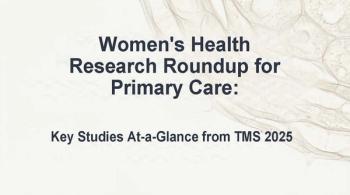
Pinguecula in a 35-Year-Old Man
Pingueculae represent elastotic degeneration of the substantia propria.They develop on the bulbar conjunctiva of older persons after prolonged exposure to drying, dust, and the UV rays of the sun.
The yellow lipid deposit at the limbus of a 35-year-old man’s right eye is a pinguecula. Generally, pingueculae develop on the bulbar conjunctiva of older persons after prolonged exposure to drying, dust, and the UV rays of the sun; they represent elastotic degeneration of the substantia propria. Pingueculae typically arise on the nasal aspect of the conjunctiva. Those that advance to the cornea are called pterygia. Note, however, that a pterygium does not necessarily arise from a pinguecula. Dr Robert P. Blereau of Morgan City, La, writes that these lesions are usually harmless and require no treatment. Occasionally, they become inflamed, resulting in pingueculitis, which can be treated with topical corticosteroids.
Newsletter
Enhance your clinical practice with the Patient Care newsletter, offering the latest evidence-based guidelines, diagnostic insights, and treatment strategies for primary care physicians.













































































































































































































































































